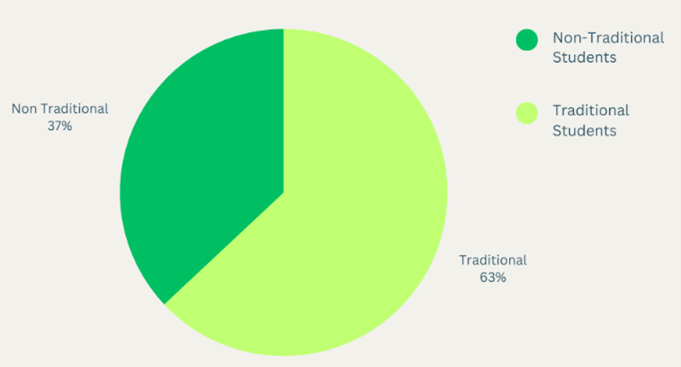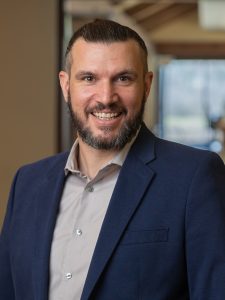When asked to picture a college student, the typical representation is a young adult – anywhere between 18-22 years old. They are probably wearing jeans and possibly a shirt emblazoned with the name of the institution that they attend. While that image fits the simple majority of students, it doesn’t represent all of them.
Despite the overall numbers of students enrolled in higher education decreasing, the number of non traditional students attending classes has been steadily increasing. In fact, research from Higher Learning Advocates shows that in Pennsylvania 37% of college students today are over 25.
Non Traditional Students Today
Traditionally, a non-traditional student was anyone attending a college or university who was over the age of 25. Today, age is not the only defining factor. The National Center for Education Statistics defines non traditional undergraduate students as meeting one of seven characteristics:
- Delayed enrollment into postsecondary education
- Part-time enrollment
- Financially independent
- Full-time employed while enrolled
- Has dependents (other than a spouse)
- Is a single parent
- Did not obtain a standard high school diploma
These non traditional students come from all walks of life. There are single parents, veterans, those who are employed full-time and taking classes, people returning to school after working, and/or those completing a second degree or changing careers. With the variety of backgrounds, experiences and responsibilities, non traditional students require more from their higher education institution than a residence and dining hall.
In today’s world, just 16% of higher education students live on campus. While the traditional 18-22 year old student may spend most of their time on campus in classrooms and residence halls, non-traditional students’ time on campus is most likely limited to classrooms, community spaces and study lounges. To meet the needs of these students, the design of the higher education facilities needs to adapt to the changing student population daily needs.
Some elements to consider that can be especially important to non traditional students include:
Technology – Most non 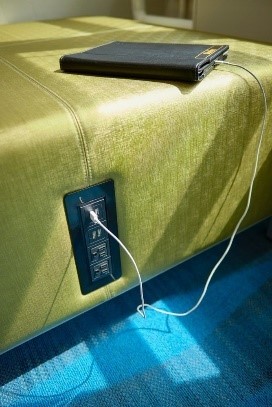 traditional students will be commuters. Spaces should have enough outlets, charging stations and work areas that are laptop friendly so that these students can touch down and study, do classwork or catch up on work email.
traditional students will be commuters. Spaces should have enough outlets, charging stations and work areas that are laptop friendly so that these students can touch down and study, do classwork or catch up on work email.
Flexible Furniture – Furniture in campus common areas should allow for easy collaboration with fellow students. There should also be areas that enable solo work. Standing desks and workstations can also be a welcoming working environment after a long commute to class.
Flexible Spaces –Large interior spaces should be designed with different zones. Quiet areas to study and rest should be included as well as welcoming common spaces to socialize. A space designed for intentional interaction can help establish a sense of belonging and community for commuters.
Childcare Spaces – 24% of non-traditional students in Pennsylvania are parents. Offering childcare options on campus is a way to keep learners enrolled. It also offers a way to differentiate your institution from others to prospective students and at the same time this service can help to recruit and retain faculty and staff.
Accessible Learning – Many non-traditional students may be returning to the classroom after many years. To ease the transition and help promote student success, educational institutions can offer spaces that provide opportunities and assistance to campus learners. Some of the programs that can be offered include academic coaching/tutoring in one-on-one and group formats, supplemental class instruction and a writing center that offers assistance.
Experiential Learning Spaces – Many non-traditional students may be taking classes in order to change careers to learn new skills. Hands-on experiential spaces provide non-traditional and traditional learners a way to upskill and gain needed practical experience. By partnering with community businesses, an educational institution can provide students with needed real-world experience. The companies involved and local community can also benefit through a pool of skilled talent that may choose to find employment in the surrounding area.
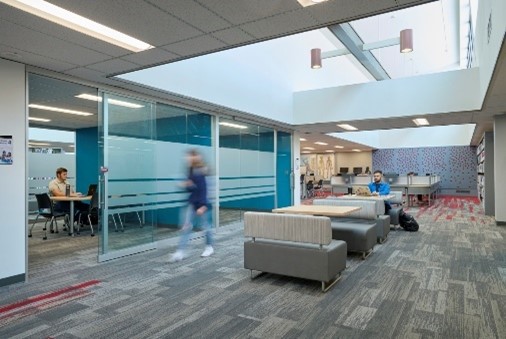
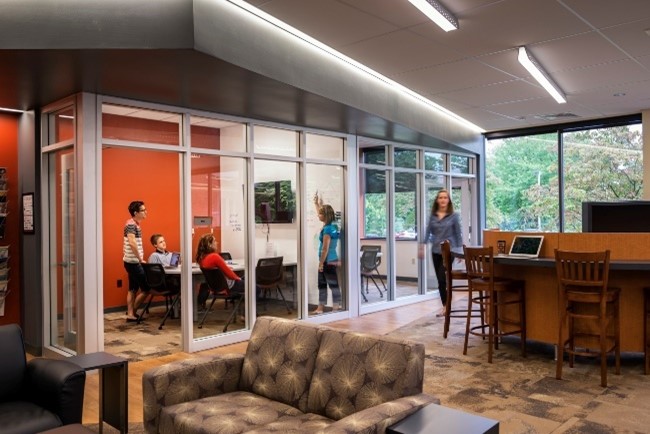
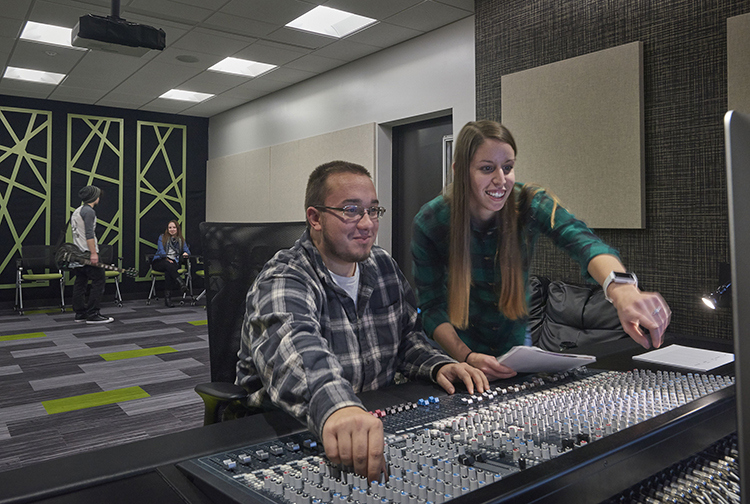
About the Author
Carson has responsibility for coordinating multi-disciplinary teams and guiding projects through the planning and design phases into construction and occupancy. He works closely with clients to translate design objectives into innovative solutions within the constraints of budgets, schedules and accessibility guidelines. Carson is an NCARB Registered Architect, a LEED Accredited Professional and a WELL Accredited Professional. He is a member of the American Institute of Architects and past president of the AIA Central PA Chapter. Carson also participates in the Penn State University architectural student mentoring program. In 2021 he was a recipient of the Penn State Alumni Association’s Alumni...
Learn More About Carson
